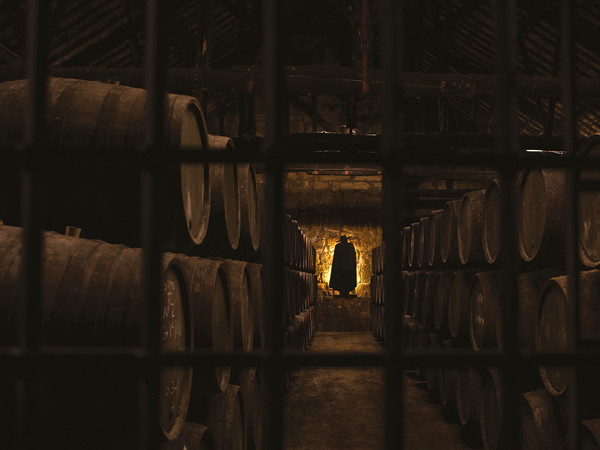
Headline Heroes: The tawny revolution
James Lawrence looks at the resurgence of an aged Port to appeal to new consumers
You can’t teach an old dog new tricks” is an axiom easily dismissed when discussing the recent exploits of Port producers. Over the past decade, key players such as Sandeman have made a concerted effort to appeal to a wider consumer base: new styles, bottle designs, and ingenious marketing campaigns have all made a lasting impact.
Yet at the heart of Port’s resurgence is a venerable style that has been made for centuries. Tawny Port, aged in barrels for a decade (or far longer), is one of the industry’s most attractive purchases: complex, lively, and imbued with endless depth. Moreover, a bottle of a long-aged tawny – gently matured in cask for decades – represents exceptional value for money. “The age classification of 10, 20, 30, 40 or 50-year-old makes the distinctive character of each of these aged tawnies easy to understand and their subtle complexity makes them very appealing, especially when served cool or chilled,” says George Sandeman, seventh-generation member of the founding family.
“The gradual oxidation in oak barrels, with consistent rotation and drawing off each year, allows the young full-bodied Ports to gradually evolve from fruity ruby to lighter red and golden amber colours. At the same time, the fresh plummy character becomes more complex and develops flavours of raisins, dried fruits, nuts, honey and spices.”
↓
Ancient cellars
Sandeman has been producing tawny Ports since the 19th century, aged to nutty complexity in its ancient cellars on the south bank of the Douro River; low temperatures and a relatively high humidity create vibrant tawnies with great freshness and precision. “Unlike most English shippers, Sandeman took interest in tawnies in the 1850s, when the company started to build stocks of ageing Ports. Today this gives Sandeman aged tawnies the singular advantage of a broad and high-quality inventory of aged Ports from which to select,” explains Sandeman.
Yet this dynamic house is also a major innovator – it often surprises visitors to learn that the Douro is awash with the latest advancements in vineyard technology.
Indeed, laser-guided machines for cutting vine terraces and GPS satellite technology to evaluate grape ripeness are now an important part of this historic region. Meanwhile, new bottle designs and expressions are winning over a cohort that once steered well clear of anything fortified.
“In the past 12 months we have seen Port sales increase, particularly in wine bars and hybrid venues,” says Jim Wilson, portfolio director at Hallgarten & Novum Wines.
“This increase in demand in more wine-focused venues can be an opportunity for operators to open consumers’ eyes to alternative styles of Port, which is where styles such as tawny can come into their own.”
Thanks to a judicious blend of tradition and renewal, the Port category is positively upbeat.
Q&A: George Sandeman, seventh-generation member of the founding family
How is Sandeman updating the aged tawny category for the 21st century?
Since the mid 1980s, Sandeman has had a leadership role in developing the aged tawny category, promoting new ways to enjoy these Ports. We have suggested serving them chilled, matching them with food and, more recently, promoted their mixological potential within luxury cocktails. The 21st century has also been rich with innovation, which is an integral part of Sandeman’s DNA. To celebrate the new century the house released a 40-year-old tawny in 2000, adding to the 20 and 30-year-old range. Meanwhile, as part of the 225th anniversary in 2015 we released a single-barrel bottling – Cask 33 – to highlight the magnificent stocks of ageing tawny in the Sandeman cellars. Respecting more than 230 years of heritage, the change from a traditional dark bottle to a bespoke transparent one has been a key step in allowing us to show off the different colour tones of each tawny – making them more appealing and easier to understand. Finally, the release of a 50-year-old tawny Port in 2022 shone the spotlight on Sandeman’s unrivalled portfolio of aged tawnies.
Do you think these messages are hitting home with younger drinkers?
The introduction of a bespoke transparent bottle, combined with a clear labelling of age, has made the selection simpler for new consumers. By keeping innovation allied to authenticity we support this approach, promoting these aged tawnies to more open-minded drinkers.
What innovation(s) are you most proud of?
Our range of lighter, lower-in-alcohol, and fruity Ports (such as the easy-going white and rosé Sandeman Beat Ports), that work as an alternative to mixers and are designed to be enjoyed with ice, tonic water, and lemon. The Beat range can also be found in a Portonic canned version – thus making available the famous Port cocktail with the perfect recipe in an easy and convenient format.
How important is sustainability for Sandeman?
In 2017, Sandeman moved all entry-level wines (80%) to lightweight bottles, contributing to Sogrape’s reduction in total carbon emissions: a reduction of 12,700 tons between 2013 and 2022. Going beyond this at Sandeman’s Quinta do Seixo vineyard: the reduction of pesticides; using mating disruption to combat insects with pheromones; the use of ground cover to avoid evaporation; and the substitution of tractors with horses for tilling old vineyards are all part of the programme.






